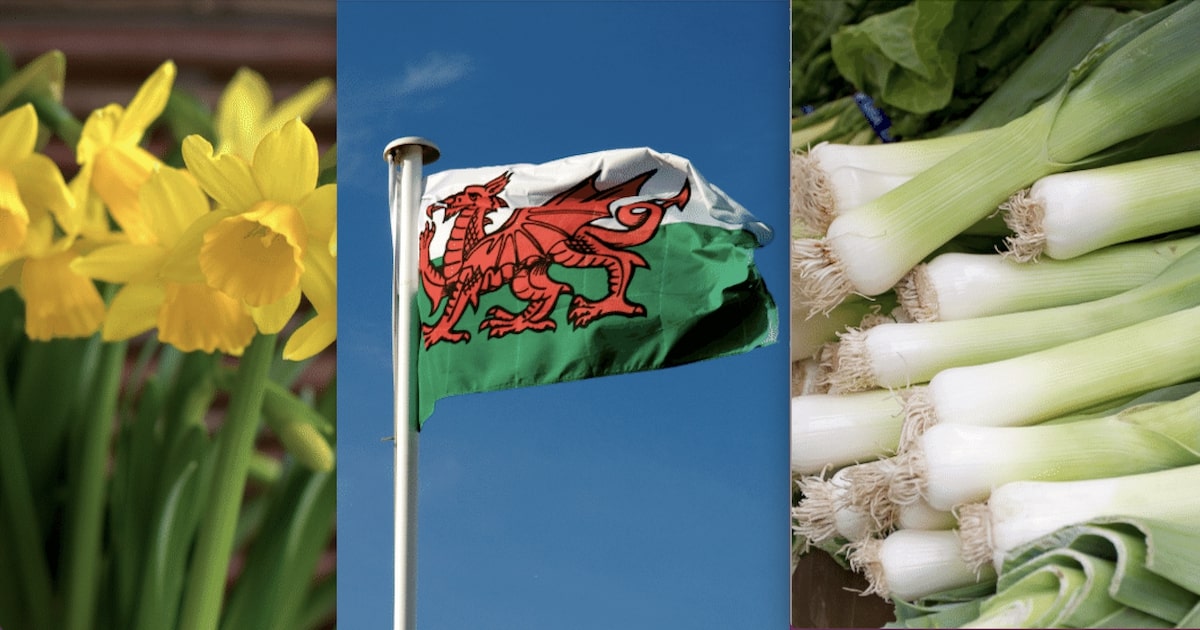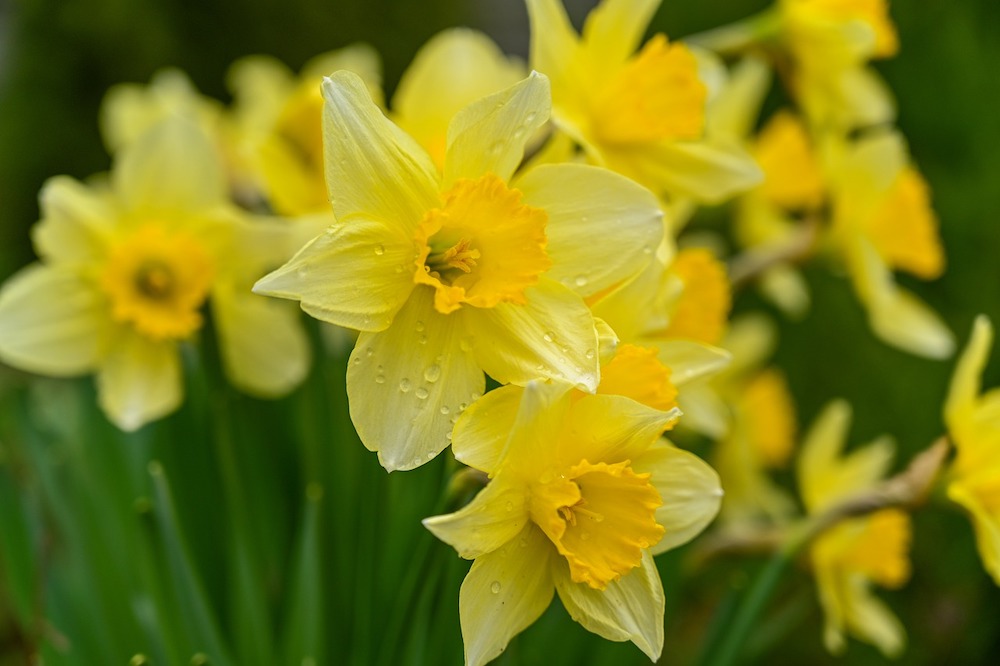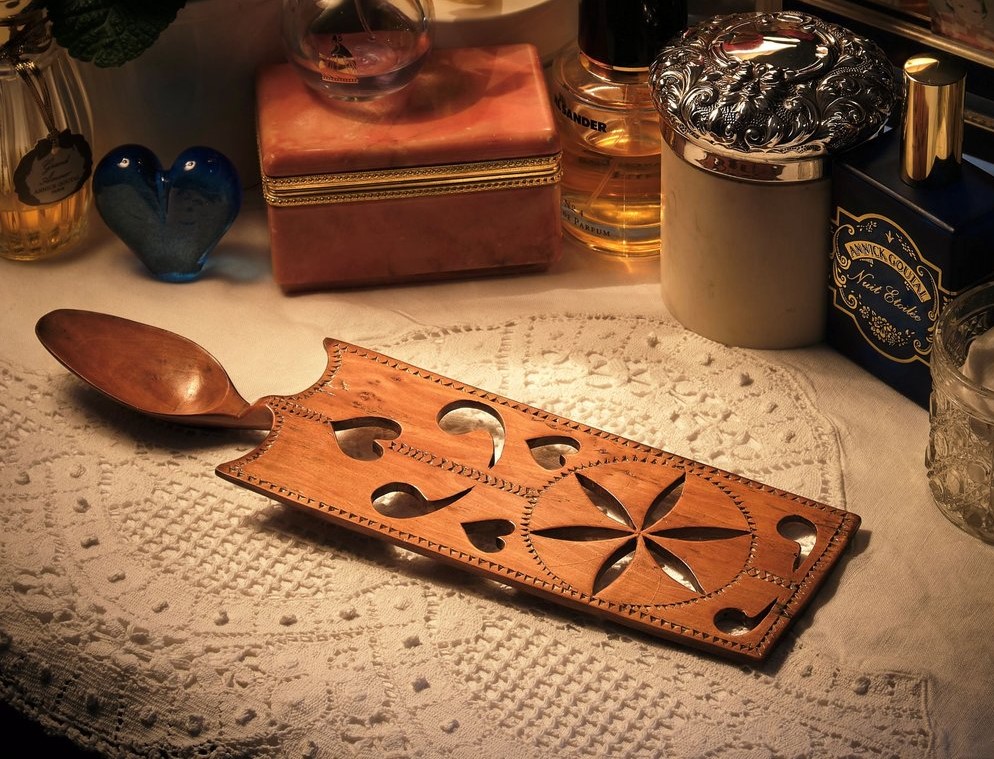The national emblems of Wales – and their surprising origins

Claire Miles
Possessing a rich history and culture, interwoven with myth and legend, it’s no surprise that Wales has a myriad of national emblems that reflect its long past.
From the traditional leeks and daffodils to Y Ddraig Goch flying high on Welsh flags, there are some symbols that are simply and undeniably Welsh.
But where did these national symbols of Wales originate from? And how Welsh are they really?
Leeks
Given the long history of the humble leek as a national symbol of Wales, it’s no surprise there are many stories associated with the green and white vegetable.
Most people tend to agree that the notion of the leek being associated with Wales arises from a legend where King Cadwaladr of Gwynedd ordered Welsh soldiers to identify themselves by wearing the leek in battle. The vegetable has also featured in other famous battles in history – including the Battle of Crecy in 1346, where Welsh archers fought in a field of leeks.
Court records from the reign of the Tudors reveal that Henry VIII’s daughter, the future Mary I, was ceremonially presented with a leek on St David’s Day, and there are records of the royal family purchasing leeks for the household guard to wear on this date each year. This tradition is also referenced by Shakespeare in his play Henry V, where an English character called Pistol makes fun of the Welsh captain Fluellen wearing a leek on St David’s Day.
The Red Dragon
A prominent feature of the coolest flag on Earth (well, we think so anyway), the red dragon – or Y Ddraig Goch – was first adopted as the badge of Wales in 1807, before making it onto the national flag in 1959.
Like the origins of the association of the leek with Wales, the red dragon is shrouded in legend. Featuring in both The Mabinogion and Geoffrey of Monmouth’s Prophecies of Merlin, the story goes there was a struggle between a red dragon (representing the ancient Britons) and a white dragon (representing the Saxons), with the red dragon being ultimately victorious.
The Tudors played a role in helping the red dragon symbol endure. Henry VII presented a standard of the ‘red Dragon of Cadwaladr’ to St Paul’s Cathedral after his victory over Richard III at Bosworth. The red dragon also featured on the Tudor standards and royal arms.

Daffodils
As Welsh as bara brith and Tom Jones, a lot of people are surprised to learn that the daffodil’s status as the national flower of Wales is relatively recent, especially when compared to the historic origins of emblems like the leek and the red dragon.
It wasn’t until the early 20th Century that the daffodil was adopted as a Welsh symbol.
The Prime Minister at the time, Welshman David Lloyd George, used it in ceremonies in 1911 to mark the investiture of the Prince of Wales at Caernarfon Castle. Some think the cheery yellow flower was chosen on account of its Welsh name cenhinen Bedr, which translates as ‘Peter’s leek’.
The Welsh Harp
If there is one musical instrument associated with Wales, it has to be the Welsh harp – or the triple harp to be more precise, named so because it has three rows of strings as opposed to one.
The harp has become an iconic Welsh instrument – so it may surprise you to know its origins lie in 16th Century Italy, not in the Land of our Fathers.
By the 17th Century, the Italian instrument had made its way to British shores, where it struck a chord with Welsh harpers living in London.
At the Restoration in 1660, Charles Evans was appointed his Majesty’s harper by Charles II. The role of royal harpist was revived by the future Charles III in 2000.

The Three Feathers
On an international match day in Cardiff, you will find this Welsh symbol emblazoned on the chest of thousands of ardent Welsh rugby fans. But the heraldic badge of the three feathers (or the Prince of Wales’ feathers to give it its correct name) is probably the most controversial of Welsh symbols.
The emblem – three white ostrich feathers emerging from a gold coronet – is the badge of the Duke of Cornwall, or Heir Apparent of the British monarchy.
It has been associated with the title since the 16th Century when used by the future Edward VI. While the heir apparent is not automatically bestowed the title of Prince of Wales, the symbol has come to be associated with the latter. However, no native-born Welsh princes ever used the emblem.
A single feather with the same motto (Ich Dien – I serve) was used by earlier English princes, especially Edward the Black Prince, eldest son of Edward III. There are several theories as to where the earlier iteration of this symbol originated from, many associated with Edward’s mother Phillipa of Hainaut and her familial connections to the Low Countries and mainland Europe.

Welsh Lovespoons
Nowadays, if someone tried to give you a spoon as a romantic gift, you would probably be left wondering where the flowers and chocolates were – but in Wales carved wooden spoons have been given as a token of love and affection for centuries.
The oldest Welsh lovespoon still in existence dates to 1667 and can be viewed at St Fagan’s National Museum of History. However, there is a distinct lack of sources when it comes to assessing the historical origins of the lovespoon. We can guess that they were crafted by male suitors and then gifted to the object of their affection, and we know that the different symbols incorporated into the spoons carried their own meaning.

Welsh National Dress
It’s not really St David’s Day unless you’re made to dress up in Welsh national dress for school.
We all know the tall hat, shawl and petticoat that is synonymous with the image of a Welsh woman. The popular image of Welsh national dress as we know it today developed in the 19th Century, part popularised by the work of photographers producing prints for the rising tourist trade, and part by a wider nationalist revival.
Today, you’re more likely to see a bucket hat than a tall hat when walking down a Welsh high street – the exception being St David’s Day.
While some of these national emblems may have had their historic origins outside of Wales, there’s no doubt they all firmly belong to Cymru now, being instantly recognisable all around the world.
I’m sure we’ll see several of these symbols on parade this St David’s Day – which one will you be sporting?!
Follow Claire on Twitter and read her history blog HERE
Support our Nation today
For the price of a cup of coffee a month you can help us create an independent, not-for-profit, national news service for the people of Wales, by the people of Wales.





I have a theory about Cadwallon and leeks. The tale originated at a battle near Doncaster where Cadwallon was allied with the Saxon Penda in fighting the Saxon Edwin. Knowing who was Welsh when the enemy and the ally were both Saxons doesn’t make much sense but the Welsh were Christian and the Saxons Pagan on both sides. It makes much more sense that the bodies of Christians could be easily identified in order to give them the last rites. Not that it matters anyway. The myth and legend and ritual is what gives these symbols their meaning and their… Read more »
“While some of these national emblems may have had their historic origins outside of Wales, there’s no doubt they all firmly belong to Cymru now, …” The three feathers belong to the Duke of Cornwall not us as the solicitors acting on his behalf will be quick to inform anyone using those feathers in a way that the Duke of Cornwall objects to. The daffodil, like the costume is the work of Lady Llanover an Englishwoman with a passion for Welsh language and culture. Most likely she promoted the Daffodil rather than the leek so the posh guests at her Saint… Read more »
Actually, The Three feathers comes from the ancient Cymric symbol known as the Awen sign. 90% of Cymric people don’t realise this. It was in fact Co-opted by the Germans and French.
The equivalent dress for little boys was the Welsh rugby kit,no longer I suspect.Although the Braces bread ad where a teenage girl returns from school in full regalia and screams at her mam ‘I was the only one!’could be redone with a boy.
I know which one I won’t be sporting – the three feathers. The WRU needs to kick out that emblem and while it’s at it, follow the Football Association and change it’s name to Cymru.
In reality, the Dragon story is About the struggles between the Britons themselves, as opposed to the British vs Saxons. The White represented The legitimate Britons of South Wales (House of Bran) and the Red Dragon represented the illegitimate jealous Rulers of North Wales (House of Aberffraw). The Dragons association with the Cymru in fact goes back further than the Romans. Some have shown evidence that it may have been with us as far back as when our ancestors where in Anatolia.
It’s not right, I think, to suggest it was as late as 1959 when the red dragon found its way onto the national flag. The flag had been used by Welsh organisations and people long before that. (And just a year before, in 1958, it led the Welsh team out at the Empire Games in Cardiff). What happened in 1959 was that the current flag was made the “official flag” in the sense that it could be used by (UK) government officials and offices in Wales alongside the Union Flag. Previously, since the creation of the office of the Minister… Read more »
The leek is the National symbol of cymru the daffodil is a johnny come lately.